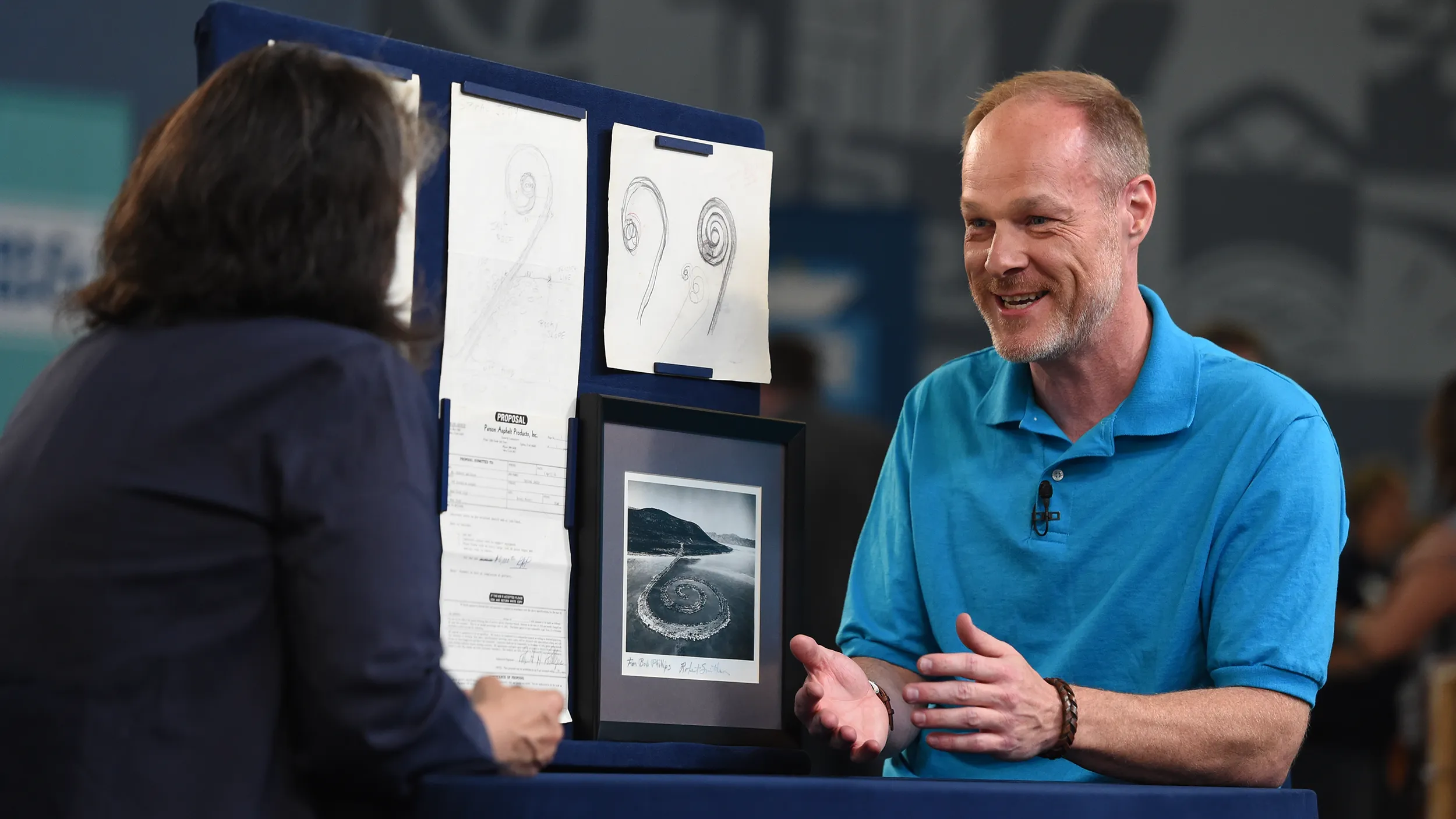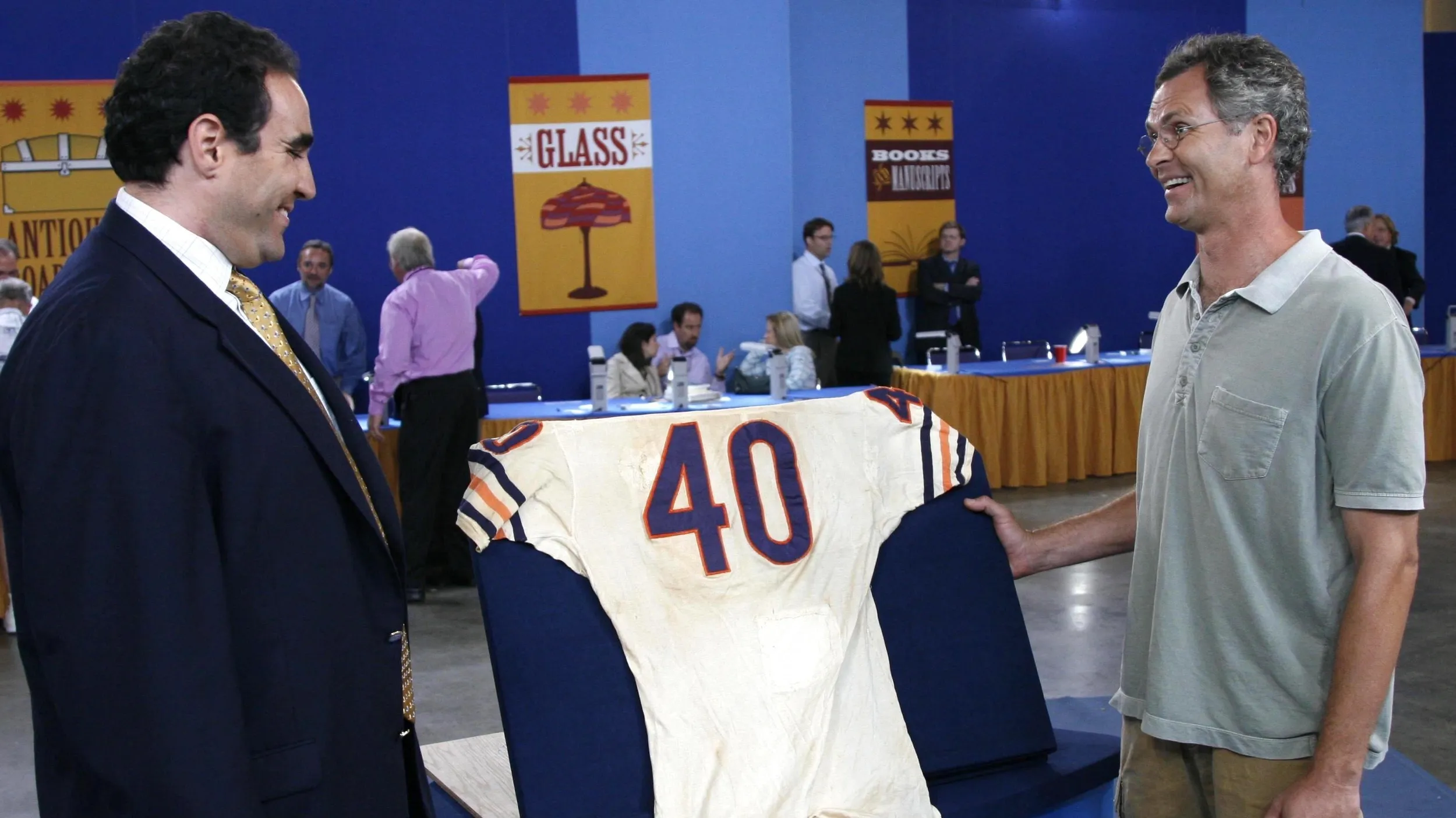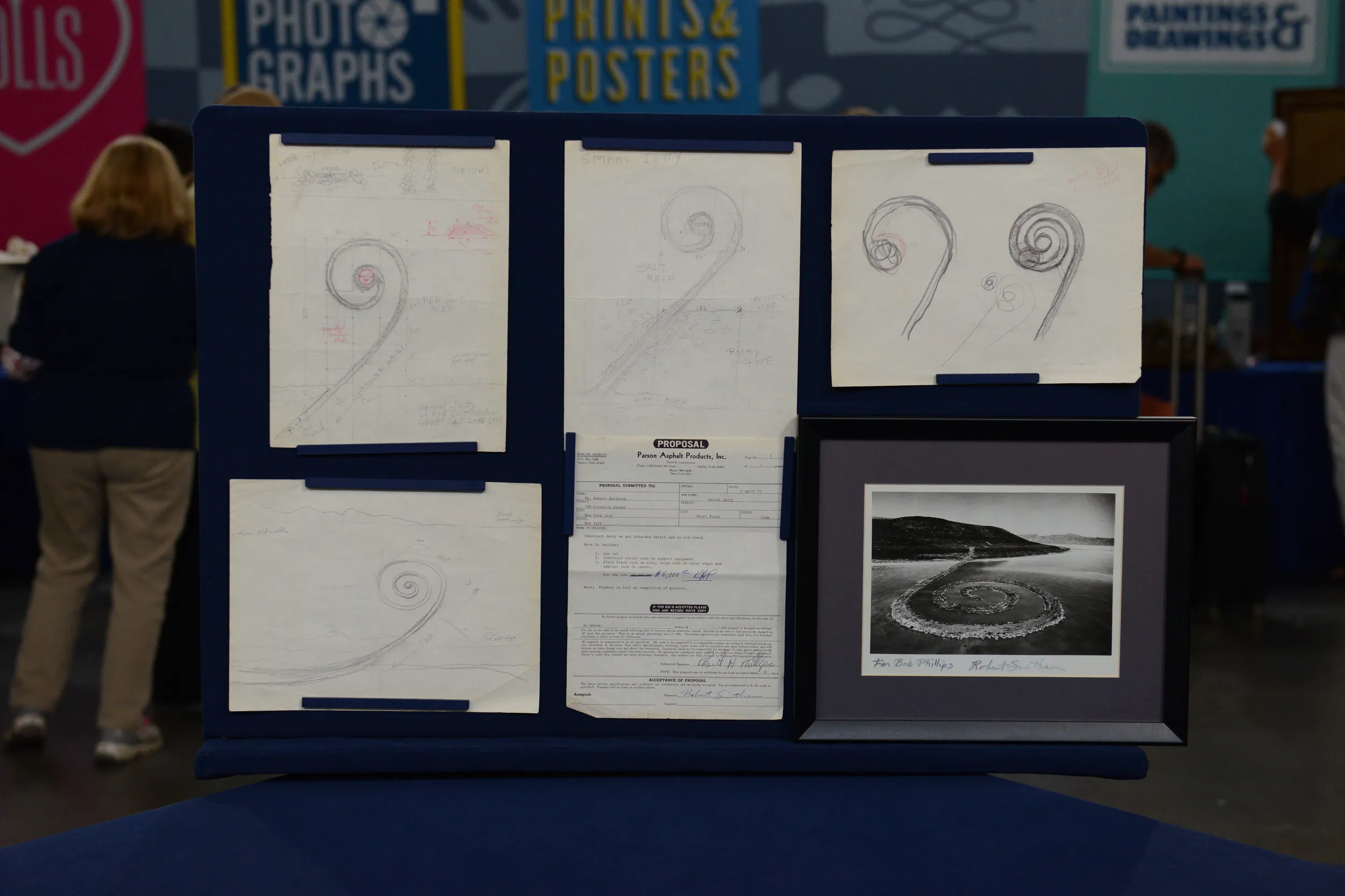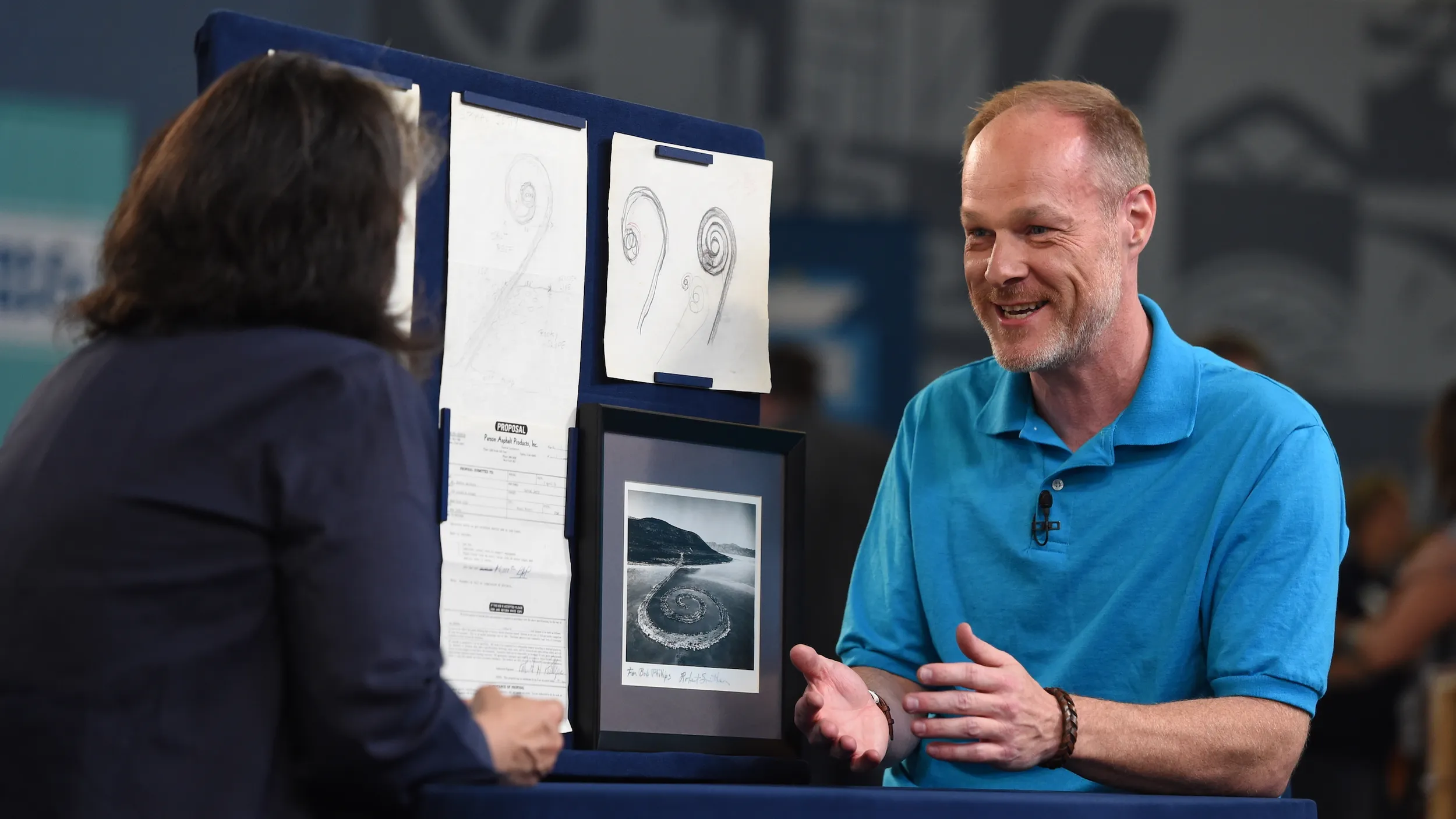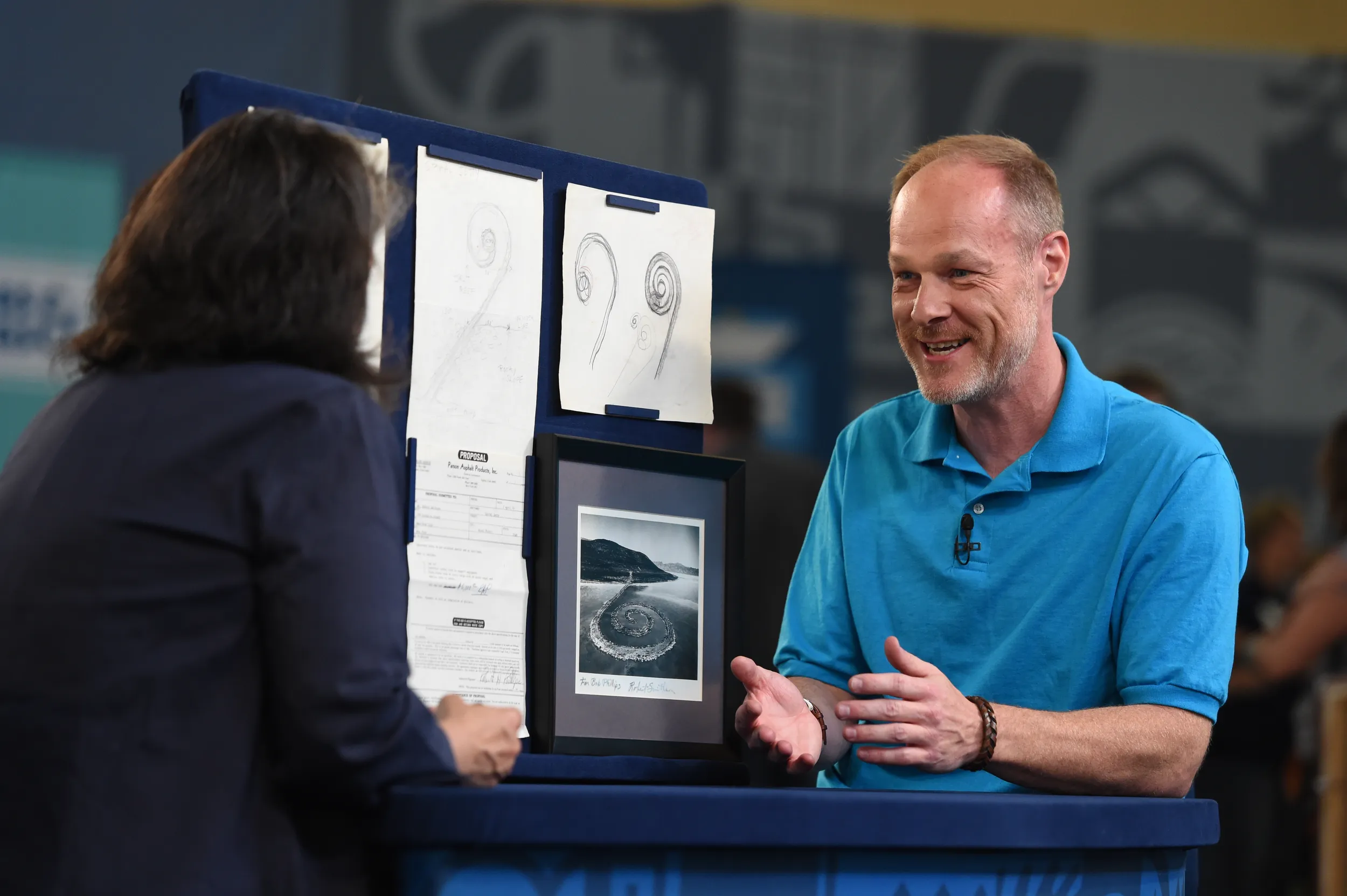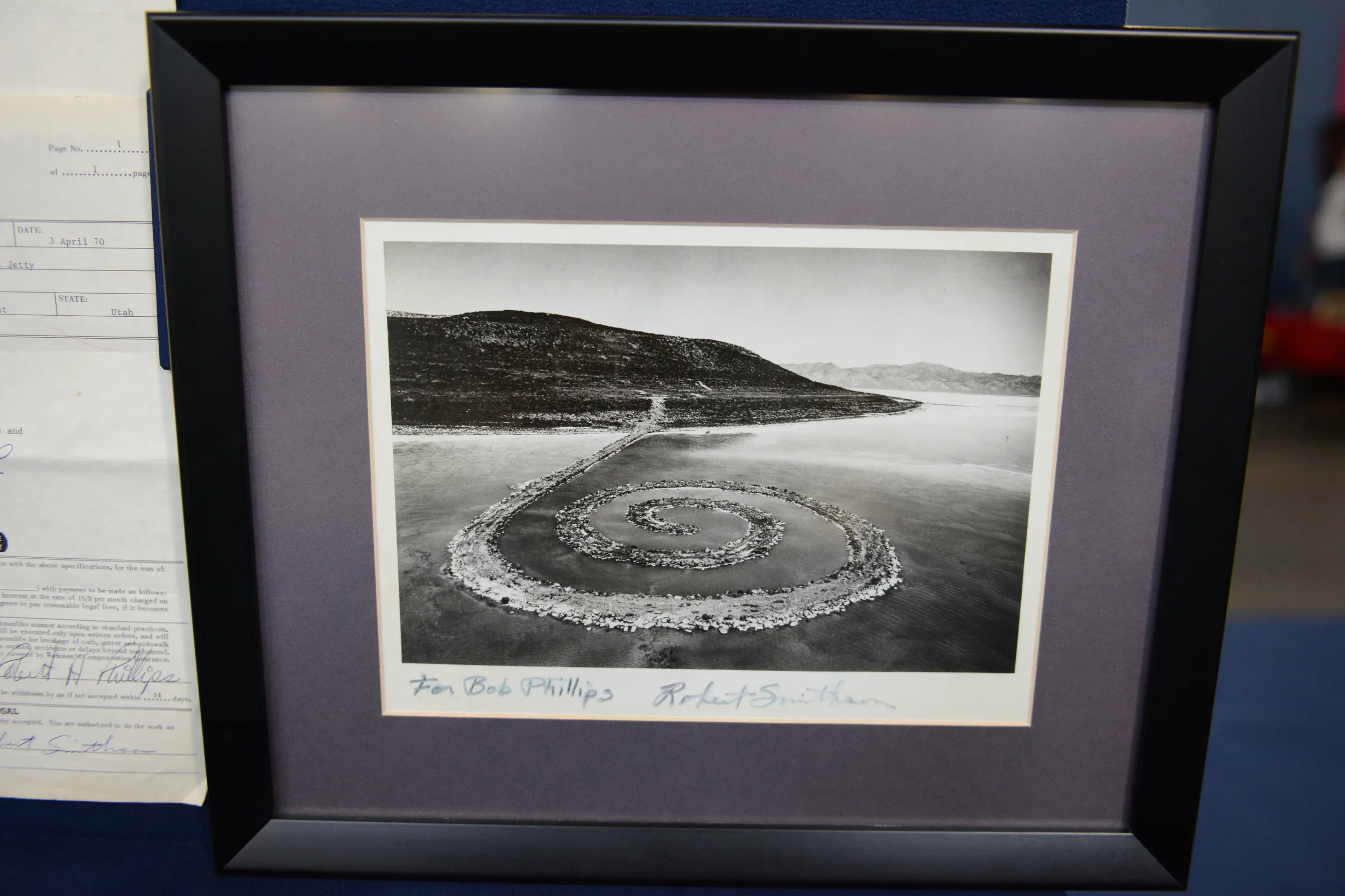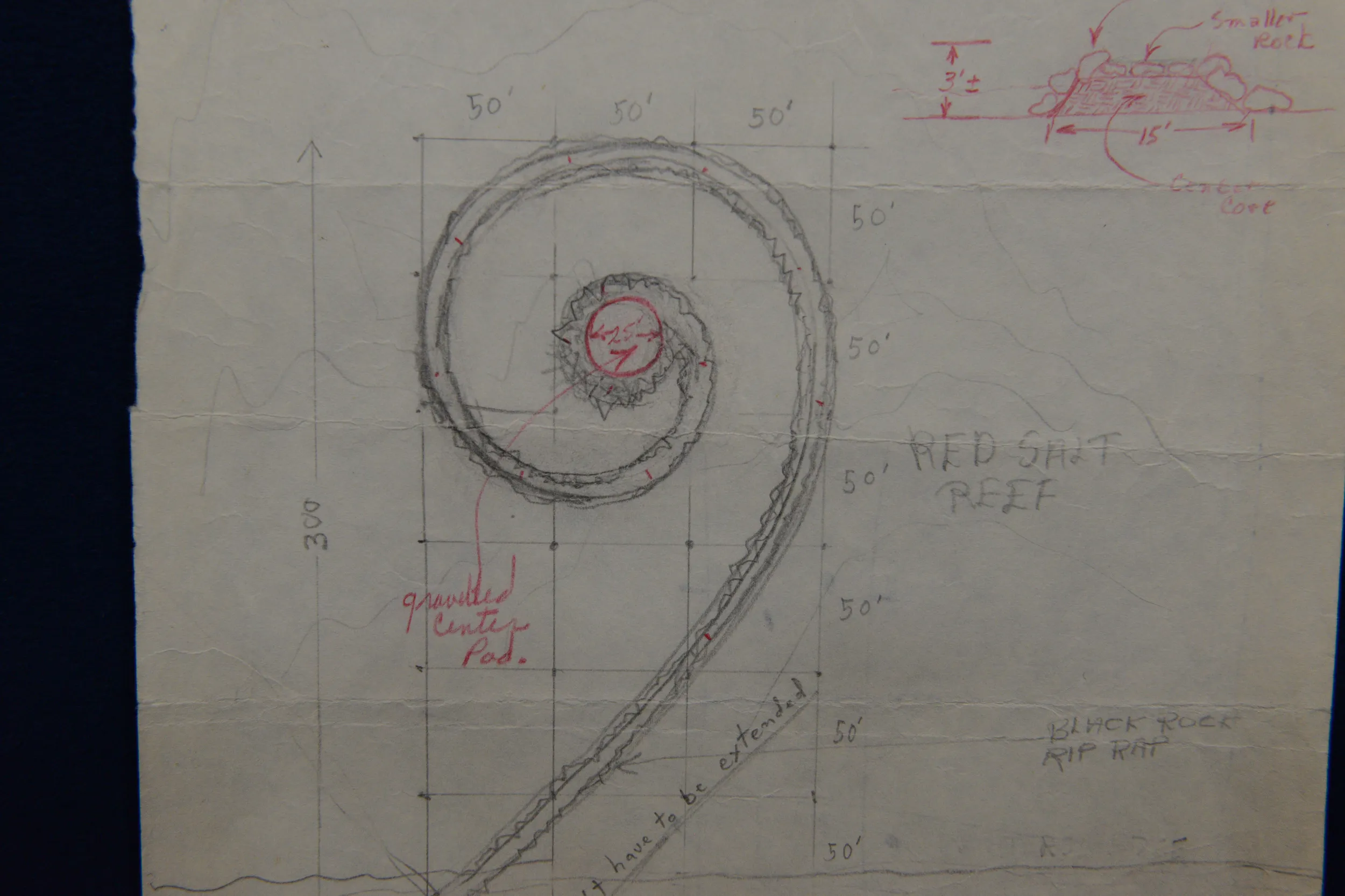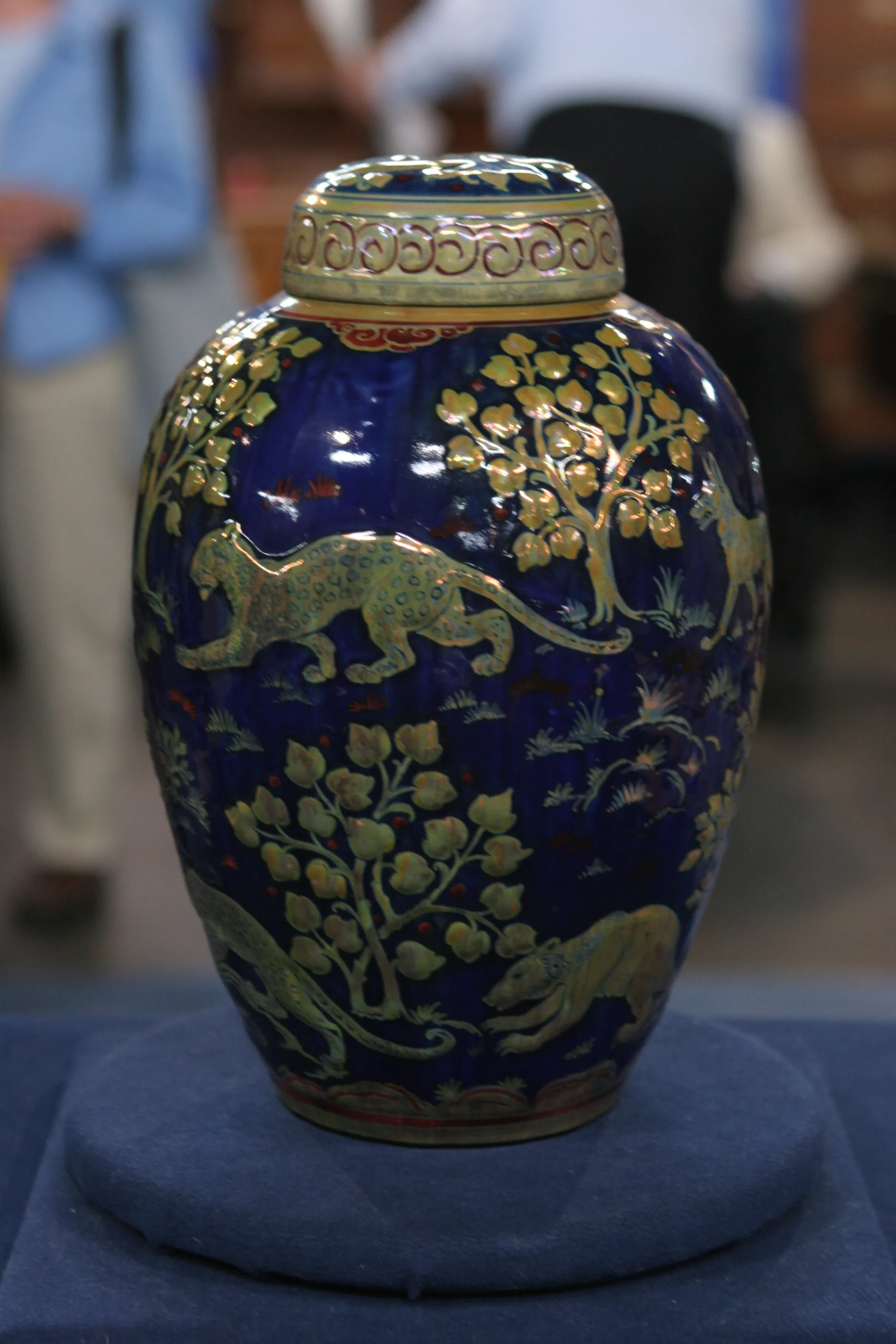GUEST: So when I was a kid, growing up in our house, we had a large photograph of the Spiral Jetty hanging in our house for as long as I can remember. It was a photo that my dad loved and that my mom didn't love quite so much. And it wasn't until I went to college, and I was in an art history class, and opened my art history textbook and saw the photo that was hanging in our family room for years and years and years...
APPRAISER: Yeah.
GUEST:...that I went to my dad and said, "This is kind of a big deal, Dad." And when I showed him that, he went into his closet, and took out a folder full of materials like this. Apparently, four or five different contractors passed on the job because they didn't want to take their equipment out to the Great Salt Lake for fear of damaging it. He was the first one who accepted the job from Robert Smithson. He worked in construction for decades and built practical things-- roads, gas lines, things like that. But for whatever reason, I think this was special enough to him, or weird enough to him, that he kept everything.
APPRAISER: What we have here is the contract that your father had with Smithson, and there was some additional work...?
GUEST: Yeah, originally, as you can see on some of the sketches here, it was like a big J with an island in the middle. And after the project was completed, Smithson came back to my dad and said, "It's not quite right. It needs to be changed." And so he requested that it be turned into more of a spiral. So they did an additional change order for that that was $3,000 additional.
APPRAISER: The thing about Spiral Jetty is, soon after it was made, the water levels had risen. You couldn't see it until the early 2000s...
GUEST: Right.
APPRAISER: ...when a drought lowered the lake, and now it's become a pilgrimage spot for land artists and Utahns. It's kind of become a symbol of Utah, hasn't it?
GUEST: Yeah, absolutely. It's definitely a very special place.
APPRAISER: Smithson was born in 1938 and he died in 1973 in a plane crash while surveying Amarillo Ramp-- only three years later.
GUEST: Right.
APPRAISER: So what you have here are a variety of drawings with a variety of different detail. This one is a more general piece, and this is the second version of the Spiral Jetty, I would take it.
GUEST: Correct, yeah.
APPRAISER: This work has more of the landscape surrounding it. This one has some red pencil, as well.
GUEST: The red is my dad doing drawings and diagrams to sort of explain how things could actually be built.
APPRAISER: So the importance of having the proposal, and having the photograph that was autographed to your father, is that it authenticates the drawings, because the drawings themselves are unsigned. There are records of drawings of Spiral Jetty coming up and selling. There's a wide range. So this work and the work in the center here I would value at about $15,000 each, conservatively, in a retail gallery. I would think that this would be more like $10,000 in a retail gallery, and this one, which I... shows the first version and the second version, I would say, would probably be about $7,500.
GUEST: Wow.
APPRAISER: So the collection altogether is $47,500.
GUEST: That's... pretty staggering. I mean, that, that really would have delighted my dad. He passed away just earlier this year. And I... he probably... he would have been delighted just to have the work shown.

